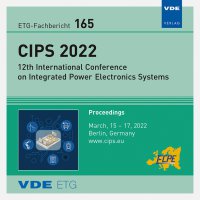Inverter Integration Strategy for a Modern Compact Motor Drive based on SiC
Konferenz: CIPS 2022 - 12th International Conference on Integrated Power Electronics Systems
15.03.2022 - 17.03.2022 in Berlin, Germany
Tagungsband: ETG-Fb. 165: CIPS 2022
Seiten: 6Sprache: EnglischTyp: PDF
Autoren:
Goerdes, Jan Philipp; Schnack, Jasper; Schuemann, Ulf (University of Applied Sciences Kiel, Institute for Power Electronics and Drives, Kiel, Germany)
Stolley, Jan; Eisele, Ronald (University of Applied Sciences Kiel, Institute for Mechatronic, Kiel, Germany)
Inhalt:
With modern traction inverters, the demand for higher efficiency and package volume are increasing at a high rate. Due to the higher costs of silicon carbide (SiC), new design strategies and technologies to reduce costs are becoming increasingly important. This publication shows a novel strategy using aluminium electrolytic capacitors, organic insulation foils and flex-PCB technology. In order to achieve a high level of integration, different strategies, technologies and design approaches are summarized in this paper. The concept presented discusses the combination of the most important components in so-called power units. Each power unit represents a fully functional two-phase output with an independent DC-link, DC-link capacitor, SiC-power modules, gate drivers and cooling. The power module cooler represents the core making it possible to use the cooler from two sides and therefore reduce the volume. To reach the highest possible cooling capacity, the module is laminated onto a cooler using organic film insulator. In order to maximize switching performance, the power module has been optimized with regard to parasitic inductance. Additionally a custom driver has been developed for the module that is mounted on top and is connected via a flex conductor. The driver circuit contains additional short-circuit monitoring and temperature measurement of the module and driver-PCB. A new approach was used for the DC-link capacitors consisting of new aluminium electrolytic capacitors whose ESL and ESR have been reduced.


